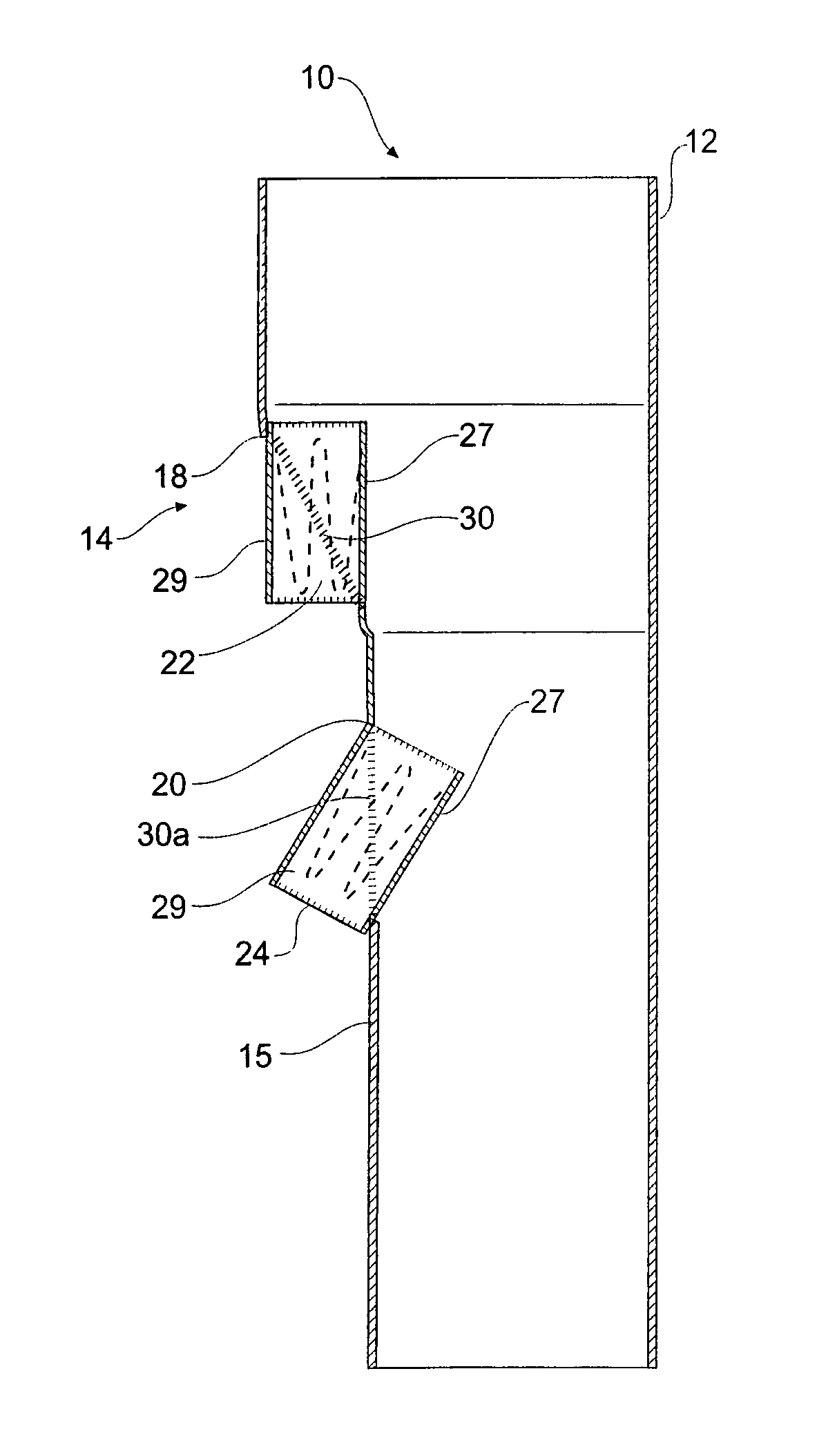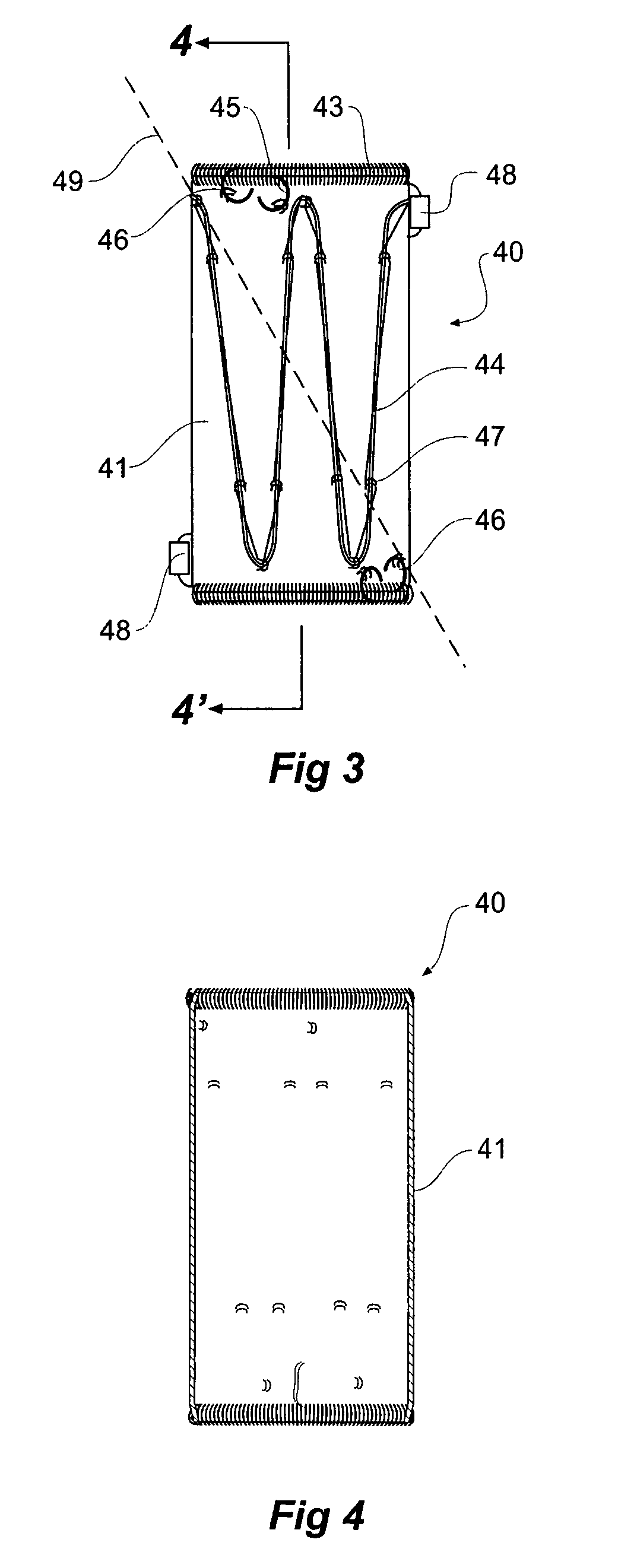Side branch stent graft construction
a stent and side branch technology, applied in the field of medical devices, can solve the problems of insufficient length of stent graft and insufficient length for sealing of extension arms, and achieve the effect of reducing the diameter
- Summary
- Abstract
- Description
- Claims
- Application Information
AI Technical Summary
Benefits of technology
Problems solved by technology
Method used
Image
Examples
Embodiment Construction
[0043]Looking more closely at the drawings and in particular FIGS. 1 to 2 showing a first embodiment of a stent graft according to the present invention, it will be seen that stent graft 10 has a tubular body 12 which includes a tapered central region 14 and a lower parallel sided portion 15. The tubular body is supported by stents 16. Preferably these stents are self expanding Gianturco zig zag Z stents but other forms of stents may also be included.
[0044]In the tapered region 14, there is a fenestration 18 and in the lower parallel sided portion 15 of the tubular body 12 there is another fenestration 20. Mounted into each of the fenestrations 18 and 20 are tubular side branches 22 and 24 respectively.
[0045]As can be particularly seen in FIG. 2, the tubular side branches 22 and 24 each have an inner portion 27 which extends within the tubular body of the stent graft and an outer portion 29 which extends outside of the tubular body of the stent graft. The tubular side branches are d...
PUM
 Login to View More
Login to View More Abstract
Description
Claims
Application Information
 Login to View More
Login to View More - R&D
- Intellectual Property
- Life Sciences
- Materials
- Tech Scout
- Unparalleled Data Quality
- Higher Quality Content
- 60% Fewer Hallucinations
Browse by: Latest US Patents, China's latest patents, Technical Efficacy Thesaurus, Application Domain, Technology Topic, Popular Technical Reports.
© 2025 PatSnap. All rights reserved.Legal|Privacy policy|Modern Slavery Act Transparency Statement|Sitemap|About US| Contact US: help@patsnap.com



